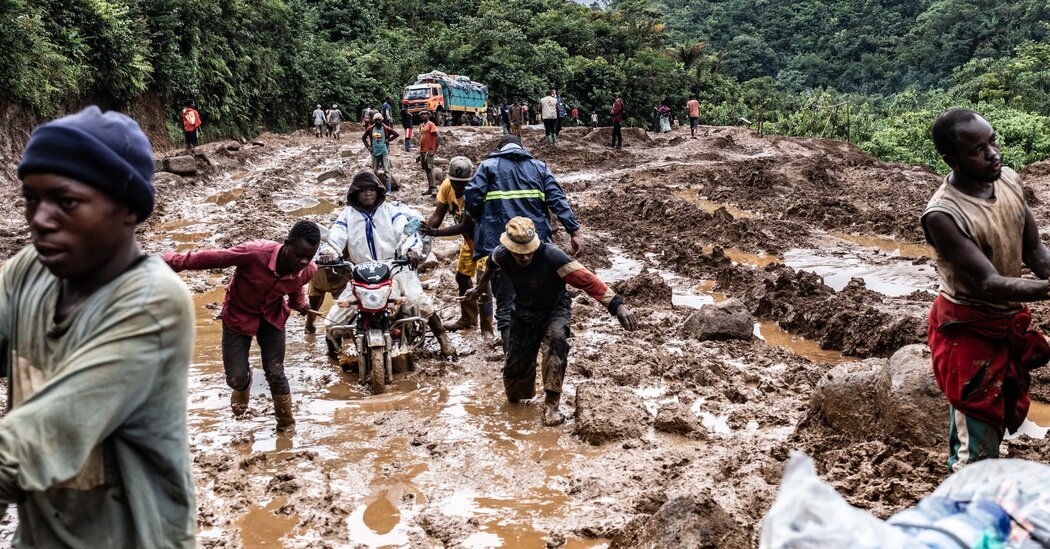A reporter made a long journey, much of it spent fighting through mud on a motorbike, to reach the epicenter of a viral outbreak in Africa.
Times Insider explains who we are and what we do and delivers behind-the-scenes insights into how our journalism comes together.
Last July, I read an article in a medical journal about a puzzling new strain of the mpox virus that had turned up in Kamituga, a scrappy mining town in the eastern Democratic Republic of Congo, more than 1,200 miles from where mpox was known to be endemic. It seemed to be spreading primarily through sexual contact, moving rapidly between people. That behavior hadn’t been seen in mpox before.
Soon the new strain had spread to a half-dozen countries in Africa, leading the World Health Organization to declare a global emergency.
Much of what I was hearing reminded me of the early days of the H.I.V. crisis. A virus jumps from an animal to a human host, circulates for years in small, isolated communities in Central Africa, and eventually, transport systems, migrant workers and sexual networks tip it into a much more widespread problem.
I have reported on H.I.V. for more than 25 years, and I saw how scientists slowly pieced together the H.I.V. origin story. But with this new mpox strain, genetic sequencing — and swift-acting health workers — helped unravel the mystery in mere months.
I wanted to travel to Kamituga. I imagined there was much I could learn, and report on, by being there to see the response to mpox firsthand.
In November, I landed in Kinshasa, where I spent a few days speaking with health officials before flying to Goma, in the country’s east. There I met up with a local journalist who contributes to The New York Times, Caleb Kabanda, and the photographer Moses Sawasawa. We took a boat down Lake Kivu, stopping at battered village docks to drop off passengers, and finally landed in the bustling city of Bukavu.
